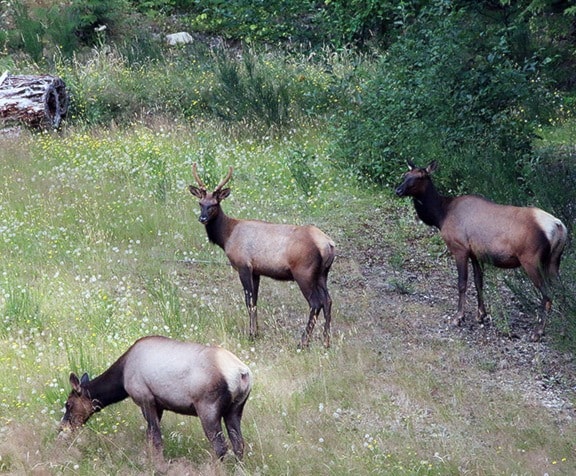Lake Cowichan Wilderness Watch members were deeply troubled to find the remains of an elk cow and her unborn fetus this week.
The remains were left following a poaching incident and were reported to Denis Martel of Wilderness Watch on Sunday, Feb. 12. He went out Monday morning with Larry Williams, another Wilderness Watch member.
“Someone phoned me about seeing a poached [elk] calf and a bunch of birds flying around so I went up and had a look. It wasn’t a calf at all; it was a cow head, just the head. And when I looked a little further, there was an unborn fetus beside it as well.
“When we went out, we saw the birds flying around. They were swooping right down onto the truck, they were trying to deter us. They wanted it for themselves.”
Even though the experienced outdoorsmen had seen such sights before, they were still distressed by what they found. “It’s shocking; people should be mad about this,” Martel said.
When Wilderness Watch finds the site of such a butchery, members phone the RAPP (Report All Poachers and Polluters) number. It’s 1-877-952-7277, and it’s open 24-7.
“That information goes onto the conservation officer’s computer and they deal with it as soon as possible. Then they get back to me,” Martel explained.
“It’s a sad, sad thing that happens. Unfortunately poaching never stops, for whatever reason. I don’t know why.”
People that are interested in conservation “go out of our way to increase the herds, to show the public is aware. And I think we’ve done a good job of that in Lake Cowichan. Everybody knows what Wilderness Watch is and what we stand for. But unfortunately this happens. And when this happens, to this degree, we need to make it public, then communication is rampant and it gives the public themselves to voice their concerns to the powers that be, by phoning conservation or wherever they choose to do that,” he continued.
He’s only identifying the site in a very general way, though.
“I made that mistake many, many years ago. I was new and I saw these seven elk and I posted the picture and the next day they were all dead, only because I said exactly where I saw them,” Martel said.
“But I’ve learned my lesson: now we say this was in the Cowichan Lake area.”
